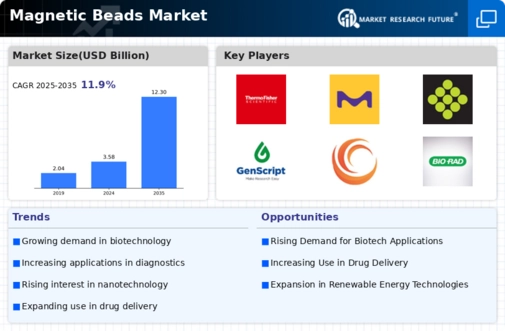Market Trends
Key Emerging Trends in the Magnetic Beads Market
The magnetic beads market has grown rapidly due to a variety of factors, including increased applications and demand across industries. The rising use of magnetic beads in diagnostics and bioseparation drives the market. Magnetic characteristics of these tiny beads, usually formed of iron oxide, help isolate and purify biomolecules like DNA, RNA, and proteins.
Magnetic beads are essential for molecular diagnostics, enabling fast nucleic acid extraction. The global pandemic has made efficient and precise testing important. The biotechnology and pharmaceutical industries have also adopted magnetic beads for immunoprecipitation and protein purification, expanding the market.
An increase in academic and industrial lab research and development is another magnetic beads market trend. Researchers are continuously finding new uses for magnetic beads, driving the industry. Magnetic beads are useful for cell isolation, drug delivery, and more due to their variety and ease of usage. As a result, new items and technologies are flooding the market to meet scientific needs.
The rise of customized medicine has increased genomics and proteomics research need for magnetic beads. Magnetic bead-based assays are helping researchers examine genetic variants and protein expression profiles, enabling more focused and effective treatments. In the next years, precision medicine will likely drive magnetic beads market expansion.
Industrial use of magnetic beads in water treatment and environmental monitoring is growing. These beads efficiently separate and remove impurities from water, helping build sustainable clean water supply systems. Water filtration methods using magnetic beads are being adopted due to strict environmental criteria set by governments and regulatory agencies globally.
Despite its optimism, the magnetic beads sector faces hurdles. Manufacturers worry about raw material price volatility, especially for high-quality magnetic beads. In some applications, competition from other separation technologies may slow market growth.


 Source: Secondary Research, Primary Research, Market Research Future Database and Analyst Review
Source: Secondary Research, Primary Research, Market Research Future Database and Analyst Review









Leave a Comment